Industries across the world dealt with the challenges hurled at them in 2020 and emerged stronger. Banks, financial institutions, and credit unions weren’t immune to the effects either but implemented innovative technologies to ensure business continuity in the wake of the pandemic. These institutions adopted new measures to operate while maintaining social distance and working remotely. While the last year was all about struggling to find their feet in the new normal, the year 2021 will be about building upon those plans and adopting new methods to keep the momentum going. It calls for improving technologies that are in use and simplifying processes for the convenience of their customers. Let’s look at the major factors that will affect their internal operations and digitize customer experience in 2021.
1. Digital Approach
Digital Banking is projected to reach $22.3 billion by 2025, as per a report by ReportLinker. It has been on an upward trajectory for the past few years, but the pandemic acted as a catalyst in its widespread adoption last year. Most banks, financial institutions, and credit unions focused on delivering the essential banking functionalities digitally or through mobile applications to make sure the customers can continue to make transactions from the comfort of their homes. Now that customers are comfortable with mobile applications and digital features, the banks have a big responsibility to simplify various processes and speed them up. We expect to see most banks opting for advanced solutions like the Banking Suite to create a strong backend system for streamlining their procedures and data flow. Banks and other financial institutions will take the digital approach for customer onboarding, loan applications, offering savings and insurance, among other things.
2. Branchless Banking
The one thing that the pandemic has taught us is that we do not need to visit the bank branches to get our work done. While banking may be easier for those who have access to phones or the internet, it is not the most favorable situation for the underserved population who may not have devices or the internet to begin with. Banks and financial institutions, to some extent, handle this with the help of the Agency Banking solution, which allows them to carry out branchless operations in remote locations through a network of agents and at a fraction of the cost. Having understood the benefits of going branchless, these institutions will also focus on installing advanced terminals or teller machines at various locations to promote self-service for several financial activities this year.
3. Fintech-as-a-Service
As banks and other traditional lending institutions scramble to introduce digital and mobile-friendly banking functionalities, they need the help of fintech companies that have developed backend technologies and digital financial processes. Most of these services are available as APIs that can be integrated into the banking systems, allowing banks to optimize tedious processes. This model, known as fintech-as-a-service, will be in demand in 2021 as more and more banks try to launch digital and mobile functionalities for their customers. Fintech-as-a-service can help improve the way banks and other traditional financial institutions function and ensure instant access to new and improved technologies and fintech solutions.
4. Personalization with AI/ML and Big Data
Banks are privy to digital information and personal data, which can help predict outcomes and create tailor-made financial products for their customers. Data Analytics, Artificial Intelligence (AI) and Machine Learning (ML) will help banks, financial institutions, and credit unions this year to offer services like real-time recommendations for better savings and personalized websites, among other things. AI can also help automate various backend processes for these traditional institutions to make it easier for the banking personnel. Traditional institutions will leverage AI to automate customer service with chatbots and voice-response systems, while Big Data will help generate actionable insights to detect and prevent frauds, optimize processes, and improve customer experience.
5. Cloud Banking
Cloud service providers deliver a set of products-as-a-service to help banks and financial institutions generate new revenue streams, cut costs, decrease their time to market new products, and enhance the customer experience. More and more banks and financial service providers will begin storing data and applications over the cloud. Cloud banking makes it possible for employees to access the software applications from anywhere over the internet. With remote working still being the norm in 2021, banks this year will implement cloud technologies to create easily accessible data sets for better collaboration. Cloud-based operations or hybrid models can enhance their resilience for responding to disruptions, beef up their security, and drive innovation to improve their business performance.
6. Adopting Advanced Security Measures
Data security is a crucial concern for banks and financial institutions. With digital and mobile banking solutions becoming more and more popular with the customers, traditional institutions have realized the importance of being prepared to take on any security breaches and frauds they may encounter. Data encryption, passwords, PINs, virtual keywords, session timeout, instant alerts, online spending limits, and two-factor authentications among other things are just some of the features already in use. Financial service providers will work on fortifying their cybersecurity further and make data privacy their highest priority this year. Users will manage the access to their data on banking apps and digital channels, while banks will be responsible for complying with the strict regulations to prevent unauthorized access to this sensitive data.
To sum it up, banks, financial institutions, and credit unions must digitally transform themselves to operate in the ‘new normal’ and deliver advanced services that the customers have now come to expect from them. The trends this year are the result of the impact of the pandemic on the industry last year. COVID-19 forced the traditional institutions to re-align their strategies in times of crisis while compelling customers to adopt these new technologies to ensure business as usual while following the government mandates of social distancing and lockdowns.
Banks or other financial service providers need to amp up their services this year to improve their performance acquire new customers, and for delivering the services that the customers expect. These financial institutions can opt for advanced digital financial services and online banking solutions like WhatsApp Banking, Mobile and Internet Banking, Omni-Channel Banking, and Agency Banking to keep up with the changing times.
Related Blogs
Rise of the New Banking Model
Digital Banking: A Pre-requisite in the ‘New Normal’


















